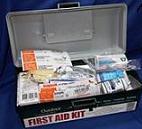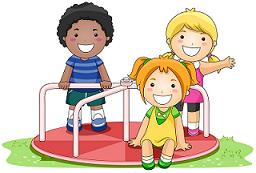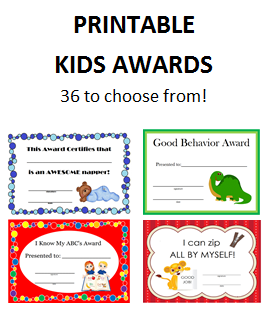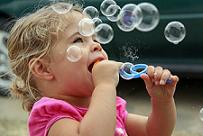Daycare License Requirements
General Guidelines for All Daycares

All daycare license requirements are put in place to insure the safety of any children in your care. All requirements, including usable space, safety items and training are based on common sense. You will be, after all, in charge of children who need a caring and diligent provider.
Below, you will find general guidelines that will apply to most home daycare's. This is general information only. Each state has their own set of guidelines.. Each city or county has the right to add their own daycare license requirements. Contact your local licensing agency to insure you will be in compliance with the daycare license requirements in your area.
You should be able to call your local courthouse to find out what specific agency is in charge of child care licensing in your area. Depending on your state, it may be:
- The Health and Human Services Department
- Family Jobs and Training, or
- The Resource and Referral Center
Daycare License Requirements
Licensing Capacity
The number of children you are able to care for will be determined by the amount of space you have available in your home. Caring for several children requires space for them to move about. The daycare licensing requirements are typically very specific regarding the amount of space you will need per child.
The daycare requirements will also vary by state on what counts as space. Areas such as closets, space taken up by major appliances, and bathrooms do not normally count as usable space. Some states do not count the kitchen area.
Your basement may count as space if the minimum exiting standards are met, the area is free of hazards, and it has passed a fire inspection. I personally chose not to use the basement for daycare use as most of my children had their bedrooms downstairs. Because they were not required to share their personal space, I believe it made them more willing to share their personal possessions.
You will also need some type of outdoor space. This area can typically be your own yard or a park/playground close to your residence. A fence may be required by your county office to protect the children from traffic, water or machinery hazards. Daycare license requirements are firm that this area must also be free of rubbish, any hazardous materials, animal wastes, or unlocked vehicles.
Home Safety
Your home must be safe for children. Anything potentially harmful to children (household cleaners, medicines) must be locked up. Daycare license requirements generally require a fire extinguisher, smoke detectors, a carbon monoxide detector, a battery operated radio and all electrical outlets should have outlet plugs or covers.
Sleeping Space
Each newborn or infant must have a crib (standard or portable) or playpen with a waterproof mattress and pad. The daycare licensing requirements are very specific about this. All equipment must be safe and sturdy. Playpens with mesh siding are generally usable for newborns, infants, or toddlers providing they are in good condition with no holes or tears. Older children can use available beds, or nap mats or cots.
First Aid Kit
All providers must have a first aid kit on the premises. The most basic kit should contain:

- Bandages
- Sterile Compresses
- Ice Bag or Cold Pack
- An Oral or Surface Thermometer
- Adhesive Tape
- Mild Liquid Soap
- Ipecac Syrup - take note of the fact that this item will have an expiration date. Pay attention and replace when needed.
**NEVER GIVE IPECAC SYRUP TO A CHILD EXCEPT ON THE ADVICE OF THE POISON CONTROL CENTER OR A LICENSED PHYSICIAN**
It is generally required that a first aid manual be included in the kit. Both the kit and manual must be easily accessible and taken on any field trips. Because all of the children’s emergency information must also be taken on any field trips, I chose to jot all the information on laminated index cards (kept in a sealed sandwich bag) that I kept in the first aid kit.
First Aid Training
As far as initial training is concerned, the daycare licensing requirements for most states require you to have 6-9 hours of First Aid and must be certified in Cardiopulmonary Resuscitation (CPR). These classes are offered in every community and are provided by the Red Cross, the American Heart Association, licensed physicians or registered nurses. There is typically a fee to attend these classes and the fees vary depending on where the class is held. Normally it is required that you have the certification in place prior to receiving your initial license. Re-certification is required, and you must remain current as long as you are a provider.
On-Going Child Care Training
Along with First Aid training, most states require a minimum of 6 hours per year of on-going training in Child Care and Child Development. The food program I was involved with puts on a workshop every year. It’s always held on a Saturday and lasts the entire day. The Daycare Providers have a multitude of short (30-45 minutes) classes to choose from. The variety of classes offered is amazing, and I chose the classes that held the most interest for me. At the end of each class, the instructor signs off on our sheets, and at the end of the day, my requirements for the year have been met. Extra training is always beneficial. If your community offers a class that fits in your schedule, it's a great way to get extra hours.
Some of the training areas may be, but are not limited to:
- Home Safety
- Storm and Fire Safety
- Guiding Behavior/Discipline
- Child Development
- Nutrition/Food Safety
- Child Abuse
- Parent/Provider Relationships
- Learning Activities
- Business Management
Once again, the daycare license requirements above are very general and will apply to most daycare homes. For the specific guidelines in your area, contact your local licensing agency.
More Articles:
- Are You the Right Person for the Job?
- What Type of Daycare is Right for You?
- Planning Your Own Unique Daycare
- Choosing a Business Name
- Setting Your Daycare Fees
- Daycare Advertising
- The Daycare Interview Guide
- Daycare Supply List
- Daycare Bookkeeping
_________________________________________________________________

Daycare Help:
- Keeping Daycare Parents Happy
- Advice to New Providers
- Daycare Storm and Fire Safety
- Daycare Breakfast Ideas
- Super Simple Art Projects
- Field Trip Ideas
_________________________________________________________________
from daycare license requirements to start a daycare main page
from daycare license requirements to simply daycare home

















